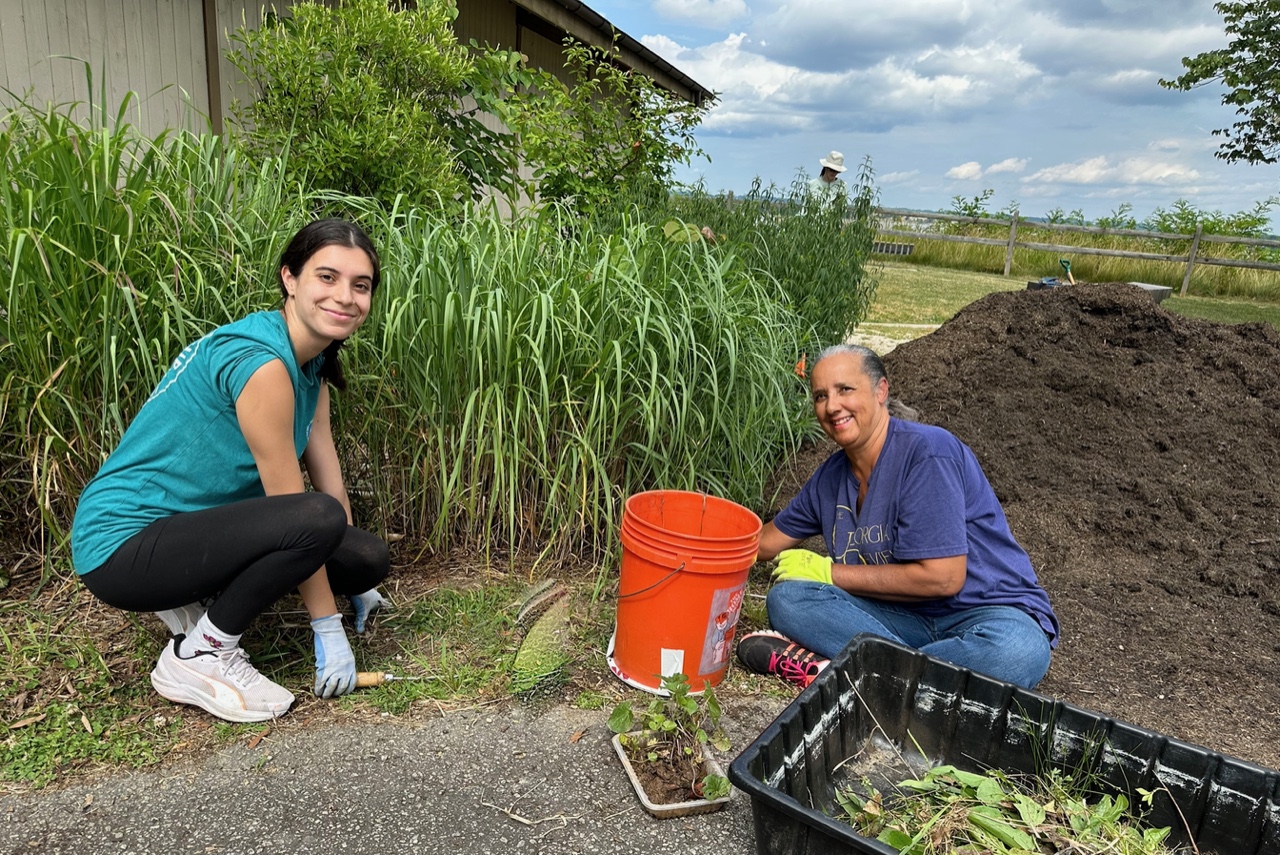Fairfax Chapter President Sarah Mayhew is pleased to see the power of rain barrel pressure to feed a soaker hose in the restored Mason Neck State Park garden
Begun on June 3rd, the park’s gardens are being prepared for the summer season with multiple work sessions. Initial work includes aerating the soil, weeding, and spreading compost in four garden areas. Rain barrels used to collect water from the visitor center roof run-off are providing a way to conserve water for use in the garden beds; providing a free, natural resource. Added plantings of fifty native wildflowers, including new species, lengthens the bloom period in each bed. The gardens, previously largely neglected, will receive monthly care from the volunteer naturalists and Friends over the summer months.
Fairfax chapter president, Sarah Mayhew, says she agreed to organize the chapter to assist after the call for volunteers by the state park staff came up short of the help needed. She notes those volunteering are able to learn to identify native plants and learn how to use rain barrels in their own gardens. Volunteers remarked on the added benefit of working in a beautiful setting, with eagles flying over the bay waters behind them and butterflies circling directly overhead.
The park’s wildlife appears to easily accept the garden improvements. A large Eastern River Cooter Turtle (Pseudemys concinna concinna) was observed making a nest in the central garden soon after the first work session moved leaves, exposing more soil. A Spicebush Swallowtail (Papilio troilus) flitted about the garden near its preferred host species shrub, Spicebush (Linear benzoin), freed from weeds. A Giant Mayfly (Hexagenia limbata), disturbed from the ground, allowed a short visit before spreading its wings for a brief flight back into the grasses. Park visitors can view these creatures and many more at the park located at 7301 High Point Rd, Lorton.
Applications for the Fall class of the Fairfax Chapter of Virginia Master Naturalists opens online on July 23rd, at:
 Elizabeth and Criss Lewis enjoy the blue sky and butterflies while weeding the Mason Neck State Park garden
Elizabeth and Criss Lewis enjoy the blue sky and butterflies while weeding the Mason Neck State Park garden
